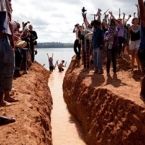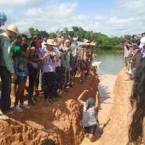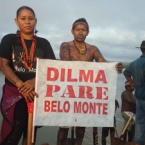On the Road from the Xingu to Rio
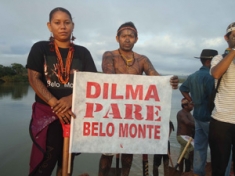
I arrived in Rio de Janeiro late Sunday evening, following six incredible days in the Xingu. As can easily happen in Brazil, the trip from Altamira to Rio felt a bit like traveling from one country to another.
The Xingu+23 encounter was intentionally held right before Rio+20 to heighten attention to the glaring human and environmental consequences of the Brazilian government’s obsession with building the Belo Monte Dam at any cost. The event is also serving as a concrete example of the huge gap between discourse and reality when the subject is “clean energy” and the new “Green Economy.” The name Xingu+23 makes reference to the 1989 historic meeting of indigenous peoples to resist Belo Monte’s predecessor, Kararaô.
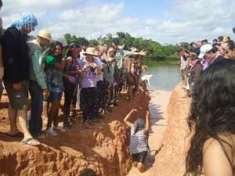
Organized by the Movimento Xingu Vivo, the Xingu+23 encounter brought together a variety of groups whose livelihoods have been threatened and increasingly devastated by Belo Monte – indigenous peoples from the Xingu and Tapajós rivers, fishermen, family farmers, urban dwellers, etc. They were joined by a diverse group of allies – from Catholic priests to human rights and environmental activists from all over Brazil and many other countries. The event focused in Santo Antônio, a village near Altamira in the process of being wiped off the map by one of the huge encampments of Belo Monte.

The Xingu+23 encounter was a success. There are many images that stick in my mind of moments from the past several days: a child holding a candle in the opening mass held under a small grove of mango trees in celebration of the village’s patron saint, Santo Antônio; the indigenous leader Juma Xipaya, 8 ½ months pregnant, in tears, vowing to continue the struggle against Belo Monte, fearing for the future of her child during a public hearing in Altamira; demonstrators opening a channel across an earthen coffer dam to symbolically free the Xingu River at the first light of morning over the Xingu; our friends Güven Eken and Dicle Tuba from the campaign against the Ilisu Dam and other destructive dams in Turkey, holding a banner showing the unification of the campaigns to protect the peoples and rivers of Amazonia and Mesopotamia.
To get a sense of the event in the Xingu, check out this short video produced by the gifted documentary filmmaker Todd Southgate, set to a song created for the movement by renowned Brazilian musician Gilberto Gil:
And see photos more from Xingu+23 and Rio:
Jason and I are now in the midst of a whirlwind of activities here in Rio. During this week, we’ll do our best to keep you posted on our activities.



